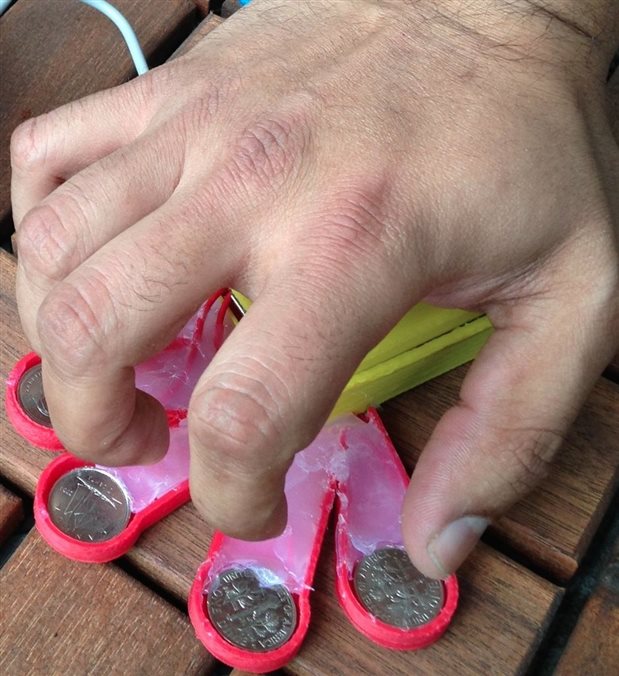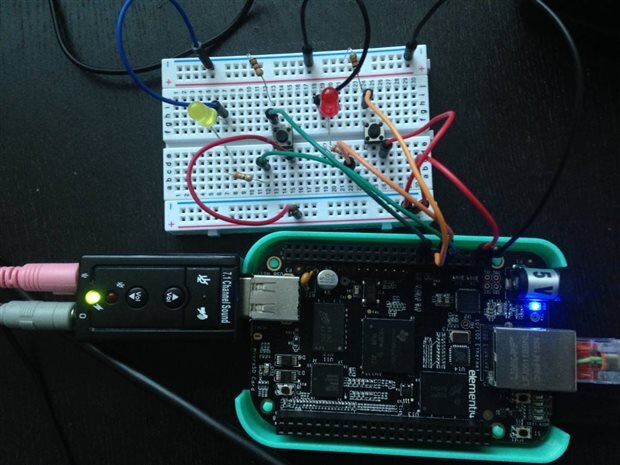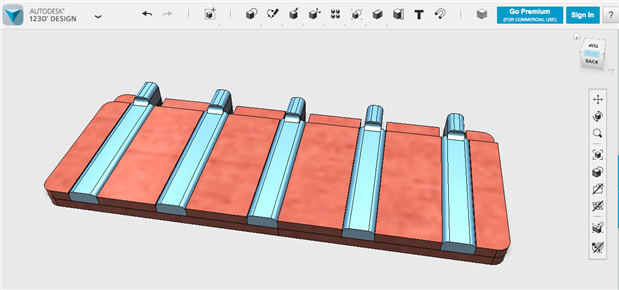Welcome back for another Design Challenge Project Summary. For those of you who are new to my content, in this series I will pick a single project from the past week’s updates, and write a short summary of the project to date. Over the course of each challenge, I try to revisit each project at least once, and I am sure that some project summaries will get more than one update if they themselves are updated frequently. Some project creators like to keep their own project summary going, and this series is not meant to overshadow those post, but to highlight each project from an outsider's perspective.
The subject of this week’s installment is project DIY Drum Kit by Carmelito Andrade (carmelito). While this project got off to a late start, it does hold a lot of potential. Carmelito’s plan is to build a DIY drum kit using a Beaglebone BlackBeaglebone Black, several MPR121 Capacitive Touch SensorsMPR121 Capacitive Touch Sensors, and two potentiometers that will be used to control beat selection and volume. While that sounds easy enough, one of the bigger goals of the project will be to build in functionality that will allow the user to record the music that is being generated, and then easily upload it to Soundcloud.com with just the touch of a button.
In its first post, Carmelito said that he plans on using a multitude of 3D printed parts that will serve as the instruments body, while something like small coins can be used as the drum set’s pads. Additionally the project will feature a display, which Carmelito says will most likely be Adafruits Monochrome 1.3" 128x64 OLED graphic display as he has one handy.
To kick off the project, Carmelito wrote a nice tutorial to show us how to record a .wav file, using ALSA -arecord when a button a pressed, and then upload the recorded file to Soundcloud.com , as shown in the video above. The tutorial is very thorough, and walks its readers step by step through the whole process including how to setup SoundCloud to receive the data. This tutorial is one of the best I have seen during this challenge, and I am very excited to test it out myself in a future project. I know I say this often, but the caliber of projects that are being posted in this challenge are some of the best we have ever seen, and I am eagerly awaiting each projects finished form.
Updated April 21, 2016
With the data upload portion of the project worked out, Carmelito moved onto getting everything set up to begin 3D Printing the enclosure for his project. As an aside to the project, his next post showed us how he is using Octoprint and the Beaglebone BlackBeaglebone Black to control his 3D printer. Octoprint is basically a web-based UI that allows users to control and monitor their 3D printer from anywhere as long as they have an internet connection. Traditionally, the Raspberry Pi has been the favorite microcomputer of choice for those wishing to run Octoprint, but Carmelito has proven that it is just as easy to use a Beaglebone Black instead. Head over to the link above to read the full tutorial.
Moving back to the project, Carmelito 3D printed a housing for the pocket version of the DIY Drum Kit, and his next post detailed the process needed to assemble a small drum kit of your own. True to form the post is full of images, connection list, instructions, and source code. As with all of Carmelito’s post, the tutorial is quite thorough, and very easy to follow. He has even included the .STL files that are needed to 3D print your own enclosure, which is something I am a huge advocate of.
The pocket version of the DIY Drum Kit is pretty cool, but Carmelito stepped it up another notch with a second design that utilized a hand-shaped, 3D printed form that houses coins that act as capacitive sensors. Named BB Drum Fingers, this version of the project is aimed at those who want to create some cool projects with their friends at makerspaces. Just like his last post, this post includes everything you will need to make a version of it for yourself. This is a very cool version of the project, and I am considering using this tutorial to let the Young Makers class I teach, learn more about digital music.
Carmelito wrapped up this project on April 10th with a final post that poised the question: “Which One Will You Make?” He quickly summarized both versions of his project, and and even teased a third version that utilizes conductive 3D printing filament. I am guessing that the third version was meant to be a part of this project, but due to mechanical issues with his printer, there was just no way to complete version three in time. Overall I think this was an amazing project, and is something that almost anyone with some tech savviness could complete on their own. This is the perfect example of a quick and simple project that can be taught at summer camps at makerspaces across the world this summer (or winter if you are in the southern hemisphere.)
That is going to wrap up my coverage of Project DIY Drum Kit. I want to thank Carmelito for participating in the challenge, and commend him on producing not just one, but two working versions of the DIY Drum Kit. This will definitely be a contender during judging. Thank’s for taking the time to read this post and, remember to tune in next week for another installment to the Design Challenge Project Summary Series here at Element14!




Top Comments
-

CharlesGantt
-
Cancel
-
Vote Up
0
Vote Down
-
-
Sign in to reply
-
More
-
Cancel
Comment-

CharlesGantt
-
Cancel
-
Vote Up
0
Vote Down
-
-
Sign in to reply
-
More
-
Cancel
Children